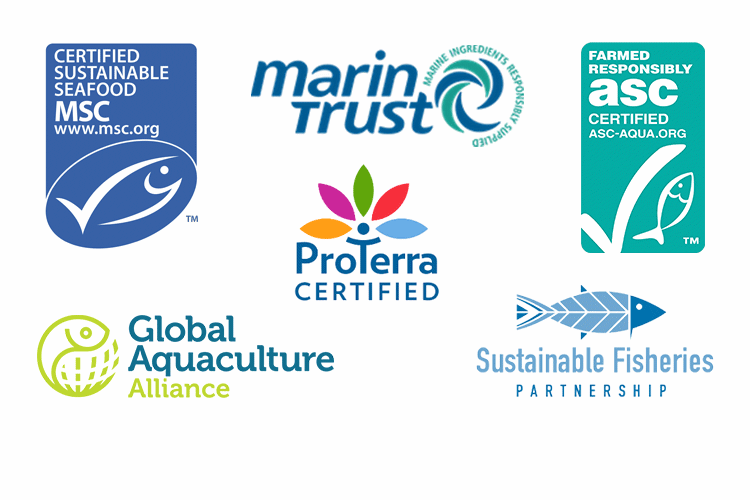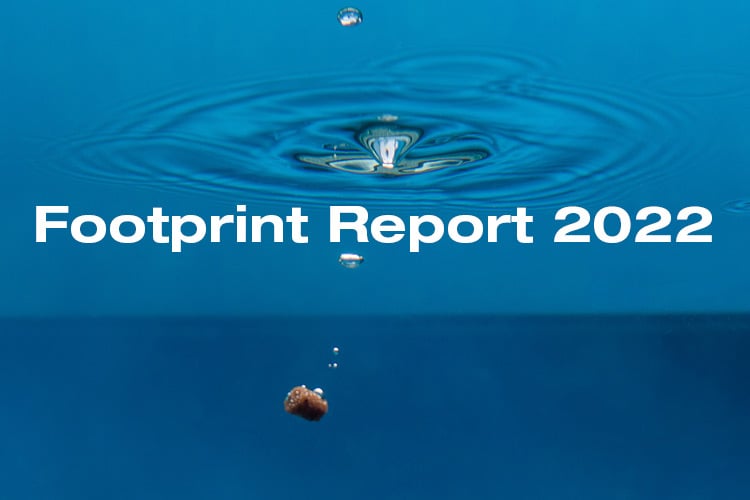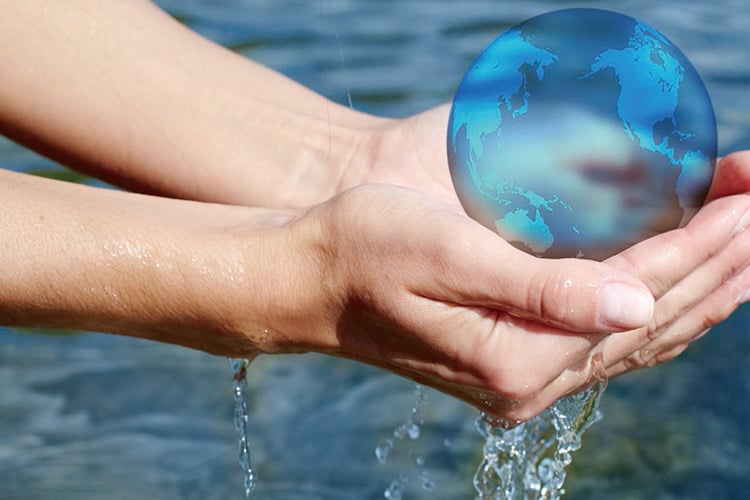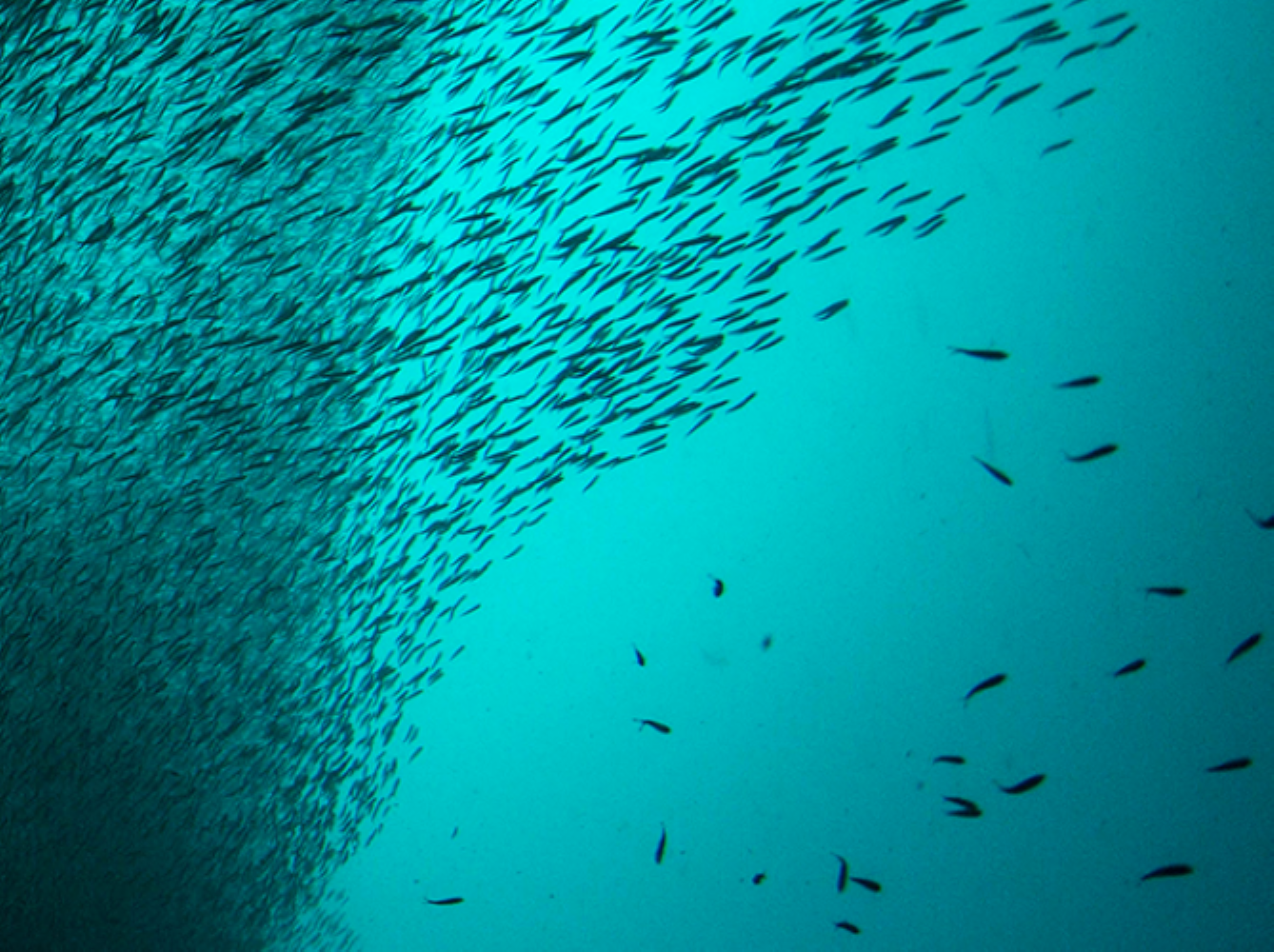
Environmental Footprint and Greenhouse Gas Emissions
Below in this text is the data for our greenhouse (GHG) emissions calculated with CO2 equivalents (CO2e), and the environmental footprint of our operations.
Through our mother company Nutreco, Skretting Australia has committed to the science-based target initiative (SBTi) with a 30 % reduction of CO2e for scope 1 and 2 and a 39 % reduction for scope 3 towards 2030 with 2018 as the baseline year.
Feed plays an essential role in ensuring the health and wellbeing of farmed fish, and can greatly improve the efficiency of the aquaculture process. While gains are made in optimising feed efficiency, feed also contributes one of the biggest environmental impacts.
Carbon footprint is an estimate of the greenhouse emissions and climate change impact of activity – for example producing one kilogram of aquaculture feed. Typically, a carbon footprint is calculated by estimating not just the CO2 emissions that the activity in question causes, but also factors in emissions of other greenhouse gases (such as methane and nitrous oxide) and in some cases other types of climate impacts as well, for example the effect of deforestation. For simplicity, all these impacts are added together and expressed as a single number in terms of carbon dioxide equivalent (CO2e): the amount of CO2 that would create the same amount of warming.
The true carbon footprint of one kilogram of feed includes not only the direct GHG emissions resulting from the manufacturing process and the transportation of the feed to the farm.
It also includes a whole host of indirect GHG emissions, such as those caused by growing the crops used in the feed, processing of feed ingredients, mining activities, production of vitamins, transport of the raw materials and so on.
The environmental footprint of our operations (scope 1 & 2)
Skretting Australia operates in accordance with the National Pollution Act 1997. Each year Skretting Australia makes a public submisison to the national Pollution Inventory (NPI) on our total energy consumption, CO2e emissions, water withdrawl, and waste generation.
Environmental footprint of operations
| Environmental performance indicator | 2022 | 2021 | Unit |
| Energy consumption | 288.7 | 272.9 | kWh per tonne |
| CO2e emissions | 56 | 54 | CO2e kg per tonne |
| Water withdrawal | 0.52 | 0.5 | M3 per tonne |
| Waste generation | 6.3 | 2.7 | Kg per tonne |
Absolute CO2eq emission per energy carrier from operations (tonne)
Through our mother company Nutreco, Skretting has committed to a 30 % reduction of CO2eq for scope 1 and 2 in compliance with the science-based target initiative (SBTi) with 2018 as our baseline year.
| Energy carrier | 2022 | 2021 | 2020 | 2019 | 2018 |
| Natural Gas | 4,586 | 4,168 | 4,681 | 3,690 | 3,332 |
| Diesel | 15 | 5 | 5 | 5 | 5 |
| ULP | 3 | 4 | 5 | 8 | 6 |
| Electricity | 1,826 | 2,020 | 1,809 | 1,954 | 1,102 |
| Absolute carbon emissions (tonnes) | 6,430 | 6,198 | 6,500 | 5,658 | 4,443 |
Disclaimer
The provided carbon footprint data are based on internal calculations following the core guiding principles of the standard PEFCR Feed for Food Producing Animals (2018), but are not based on fully compliant PEFCR studies. Although Skretting has taken care to ensure that the information contained herein is as accurate as possible and up to date, Skretting does not warrant the accuracy, reliability or completeness of the information. The values have not been externally verified. The information provided is for informational purposes only and is intended for internal business use only. The reader is solely responsible for any interpretation or use of the material contained herein. The footprint data are subject to change (e.g. due to ongoing database development or better supply chain information). Furthermore, cradle-to-gate footprint values are not allowed to be used for comparison or comparative assertions among each other or with other feed footprint data in accordance with international LCA standards. Animal feed is an intermediate product in the food production chain and the footprint attached to it only reflects part of the life cycle. Without considering feed performance/ functionality and downstream impacts, comparison is neither allowed nor meaningful.





